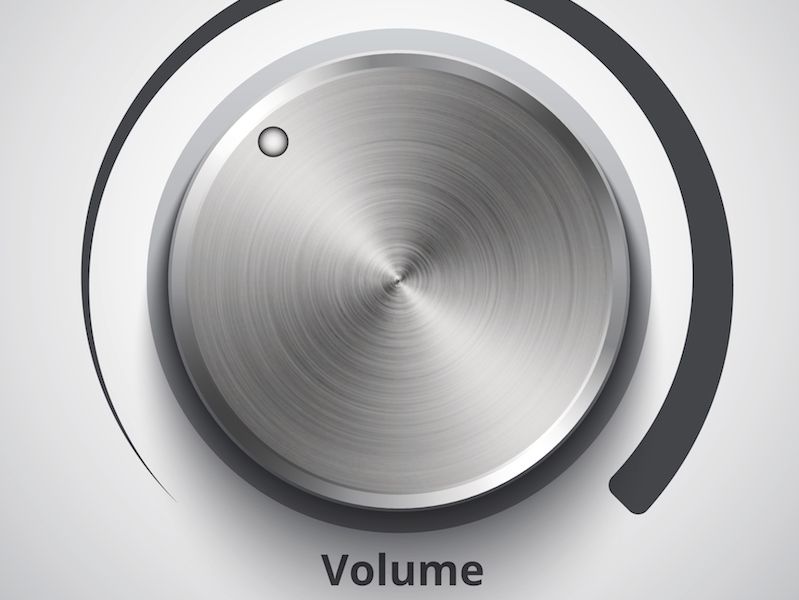
Have you ever noticed the “Beware of Sharks” sign when you go to the ocean? It’s easy to understand that you should never ignore a caution like that. A warning like that (particularly if written in large, red letters) might even make you rethink your swim altogether. But people usually don’t heed warnings about their hearing in the same way for some reason.
Current studies have found that millions of individuals ignore warning signs when it comes to their hearing (this research exclusively considered populations in the United Kingdom, but there’s no doubt the problem is more global than that). Awareness is a big part of the problem. It’s fairly intuitive to be afraid of sharks. But fear of loud noise? And how do you know how loud is too loud?
We’re Surrounded by Hazardously Loud Noises
Your ears are not just in danger at a live concert or construction site (although both of those situations are, without a doubt, dangerous to your hearing). Many common sounds can be harmful. That’s because the duration of sound is as hazardous as the volume. Even lower-level sounds, such as dense city traffic, can be harmful to your hearing when experienced for more than two hours.
Broadly speaking, here’s a rough outline of when loud becomes too loud:
- 30 dB: Everyday conversation would be at this sound level. At this volume, there won’t be a limit to how long you can safely be exposed.
- 80 – 85 dB: An air conditioner, heavy traffic, and lawn equipment are at this level of sound. This level of sound will usually become dangerous after two hours of exposure.
- 90 – 95 dB: Think of the noisiness of a motorcycle. This amount of exposure becomes dangerous in as little as 50 minutes of exposure.
- 100 dB: An oncoming subway train or a mid-sized sports event are at this sound level (depending on the city, of course). 15 minutes of exposure will be enough to be harmful at this volume.
- 110 dB: Have you ever cranked your Spotify music up to ten? On most smartphones, that’s right around this level. This amount of exposure is dangerous after only 5 minutes of exposure.
- 120 dB and over: Any sound over 120 dB (think loud rock show or very large sporting events) can bring about immediate damage and pain in your ears.
How Loud is 85 dB?
In general, you’re in the danger zone when you’re experiencing any sound 85 dB or above. But it can be difficult to know how loud 85 dB is and that’s the difficulty. It’s not tangible in the way that a shark is tangible.
And hearing cautions commonly get neglected for this reason specifically when the sound environment isn’t loud enough to cause pain. Here are a couple of possible solutions:
- Get an app: Your hearing can’t be directly protected with an app. But there are several sound level metering apps. It’s hard to judge what 85 dB feels like so your ears can be injured without you even realizing it. The solution, then, is to have this app open and track the noise levels around you. This will help you develop a sense for when you’re going into the “danger zone” (and you will also discern right away when things are getting too noisy).
- Suitable training and signage: This is true of the workplace, in particular. The significant hazards of hearing loss can be reinforced by signage and training (and the advantages of hearing protection). Signage could also let you know just how loud your workplace is. Training can help employees know when hearing protection is required or recommended.
If You’re in Doubt, Protect Yourself
Signage and apps aren’t a foolproof solution. So take the time to protect your hearing if you are in doubt. Over a long enough duration, noise damage will almost definitely create hearing issues. And nowadays, it’s never been easier to injure your ears (all you need to do is turn your earpods up a little too loud).
If you’re listening to headphones all day, you should not raise the volume past the mid-mark. You need noise blocking headphones if you are continually turning up the volume to cover up background sound.
So when volume becomes too loud, it’s important to accept it. And in order to do this, you need to raise your own awareness and knowledge level. It isn’t difficult to minimize your exposure or at least use ear protection. But you have to recognize when to do it.
These days that should also be easier. Particularly now that you understand what to be aware of.
Think you might have hearing loss? Make an appointment.